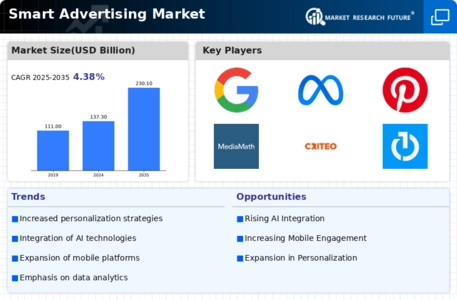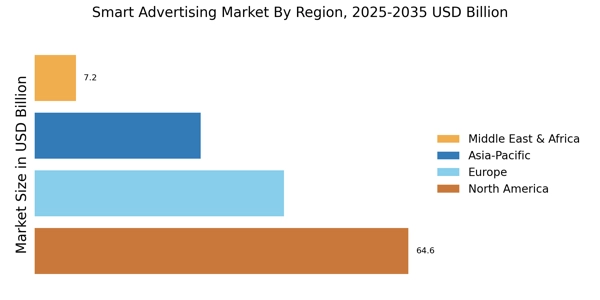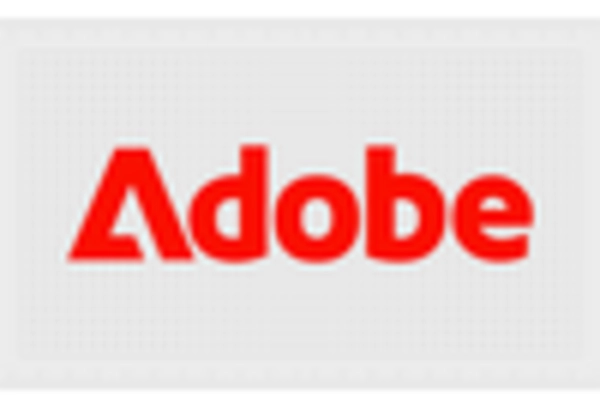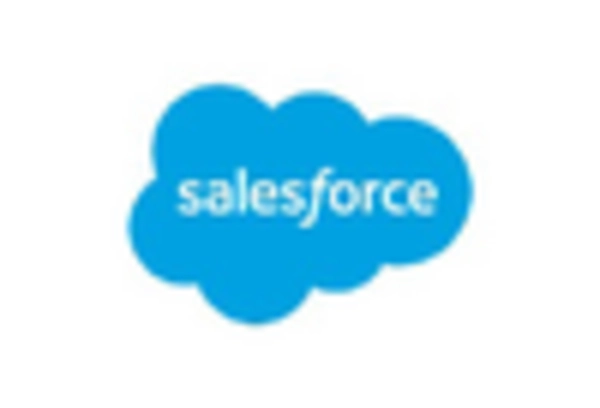Growing Importance of Video Content
The Smart Advertising Market is experiencing a notable shift towards video content, driven by changing consumer preferences and the rise of digital platforms. Video advertising is becoming a dominant format, with projections indicating that it will represent over 50% of all online ad spending by 2026. This trend underscores the effectiveness of video in capturing audience attention and driving engagement. As brands increasingly invest in video advertising, the Smart Advertising Market is likely to see innovative formats and storytelling techniques that enhance viewer experiences. The emphasis on video content reflects a broader trend towards immersive and engaging advertising strategies.
Emergence of Voice Search Advertising
The rise of voice-activated devices is creating new opportunities within the Smart Advertising Market, particularly in the realm of voice search advertising. As more consumers utilize smart speakers and voice assistants, advertisers are adapting their strategies to reach audiences through voice search. This shift is expected to drive significant growth in voice search advertising, with estimates suggesting it could account for over 20% of total digital ad spending by 2027. The emergence of this trend indicates a need for brands to optimize their content for voice search, ensuring they remain relevant in an increasingly voice-driven marketplace. This evolution may redefine how consumers interact with advertisements in the Smart Advertising Market.
Expansion of Programmatic Advertising
Programmatic advertising is rapidly gaining traction within the Smart Advertising Market, as it automates the buying and selling of ad space. This method streamlines the advertising process, allowing for more efficient allocation of resources and improved targeting capabilities. Recent data indicates that programmatic advertising accounted for nearly 70% of all digital ad spending in 2025. This trend suggests that advertisers are increasingly recognizing the benefits of automated solutions, which can optimize ad placements based on real-time data. As programmatic advertising continues to evolve, it is likely to reshape the landscape of the Smart Advertising Market, offering new opportunities for brands to connect with consumers.
Increased Demand for Real-Time Analytics
The Smart Advertising Market is witnessing a surge in demand for real-time analytics, which allows advertisers to make data-driven decisions on the fly. This trend is fueled by the need for immediate feedback on advertising performance and consumer engagement. Companies are increasingly investing in analytics tools that provide insights into user behavior, enabling them to adjust campaigns dynamically. Reports suggest that the market for real-time analytics in advertising is expected to grow at a compound annual growth rate of 25% through 2027. This growth reflects a broader shift towards data-centric strategies in the Smart Advertising Market, where timely insights can significantly enhance campaign effectiveness.
Rise of Artificial Intelligence in Advertising
The integration of artificial intelligence (AI) technologies into the Smart Advertising Market is transforming how brands engage with consumers. AI enables advertisers to analyze vast amounts of data, allowing for more precise targeting and personalization. According to recent estimates, AI-driven advertising is projected to account for over 30% of total advertising spend by 2026. This shift indicates a growing reliance on machine learning algorithms to optimize ad placements and enhance user experiences. As AI continues to evolve, it is likely to drive innovation in the Smart Advertising Market, enabling brands to create more relevant and timely advertisements that resonate with their target audiences.


















Leave a Comment